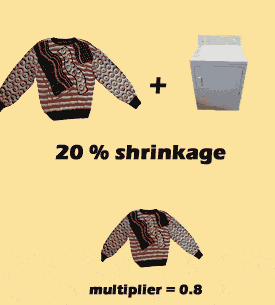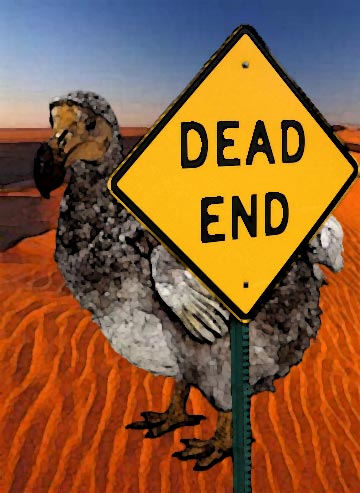Shortcut for exponential shrinkage
Remember the easy method for calculating exponential growth? In case you don’t, here it is again:
- Find a number to multiply by the original balance by converting the percentage to decimal and adding 1 (i.e., 5% becomes 1.05)
- Find the number of years needed, i.e., 10
- Raise the multiplier to the power of the number of years needed, i.e., 1.0510
- Multiply by the original balance, i.e., $1000 × 1.0510
You might think there would be a similar procedure for exponential shrinkage, and you would be right. The only real trick is #1 above. How do you convert 5% loss into a decimal number?

I have seen people try all kinds of strange numbers here. For example, I have seen students multiply $1000 by -0.05, resulting in a year 2 balance of -$50. I have also seen students multiply $1000 by 0.05 and get a year 2 balance of $50.
If you can’t quite remember the right formula, always check to see if your answer makes sense!! If I start with $1000 and spend 5%, I can’t possibly be left with only $50 at the end of the year – or even worse, -$50.
OK, end of lecture. So here is how you do want to think about it: a 5% loss is the same as a -5% growth, right? So, I will have 100% of my money left, MINUS 5%. In other words
100% - 5% = 95% = 0.95.
Remember, rates of shrinking are the same as NEGATIVE growth rates, and use the same formula to find the multiplier.
 So, some practice with negative growth rates:
So, some practice with negative growth rates:
- If my IRA loses 7% every year...
What will $1000 be worth - Unlike the developing world, population is actually falling in many developed countries. In Eastern Europe, for example, "growth" rates
are as low as -0.5%. If the population of Bulgaria was 7.5 million in 2002, then what would its predicted population be in 2020?
- Over the last 400 years, there have been 89 documented mammalian extinctions, out of about 5000 mammal species. This works out to a rate of -0.0045% per year.
be careful -- the extinction rate is less than 1% per year, so the multiplier should be > 99% !
- The price of hard-drive space for personal computers has fallen rapidly over the last 4 decades. In 1981, the average price per meg of hard drive space was $350 (yes, that means your little 1 gig thumb drive should be worth $350,000 -- of course, they had disco back then too...)
By the next year, the price had fallen to $250 per meg. Assuming that the shrinking prices of hard drives are exponential, answer the following questions:
Copyright University of Maryland, 2007
You may link to this site for educational purposes.
Please do not copy without permission
requests/questions/feedback email: mathbench@umd.edu